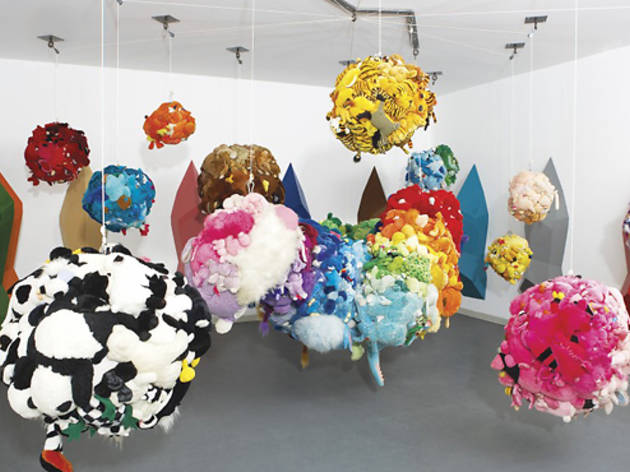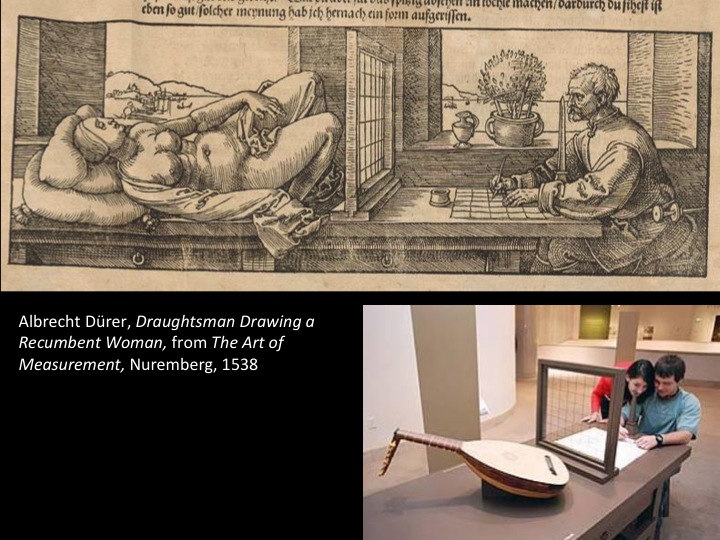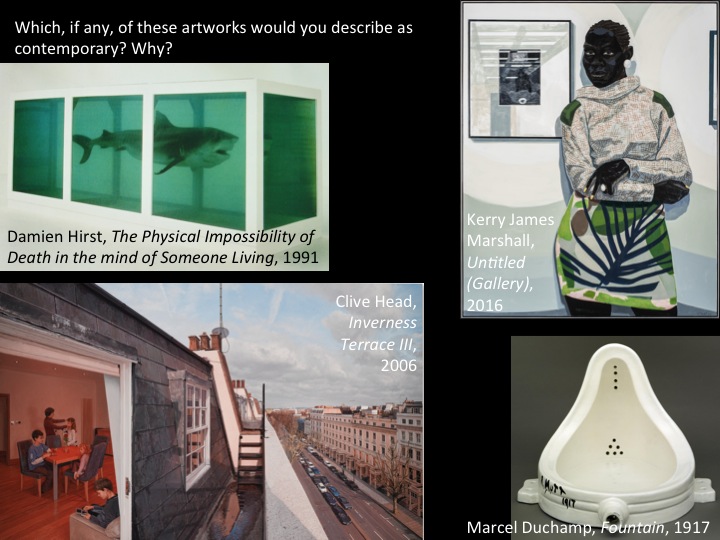For the main body and subject of my essay I am going to be exploring the contextual and cultural importance the colour blue has played. I want to look into Renaissance/Baroque artworks and make connections between colour and biblical meaning, are there any? I also want to look deeper in what the Catholic Church thinks and believes about colour, what is spoken about in Scripture. At the time the church were some a the few patrons with the amount of money to support and commission these artworks. I also want to look into Neoclassical/Romantic artworks, how has colour changed meaning, has it? Is there a huge jump within religious paintings being produced? Is blue used purely for the pleasure of the colour on the pallet? And finally I want to look into modern uses of blue, did it fall out of fashion? Blue has been one of the few colours that no mater the person it is always a preferred hue over all others, for this essay I have selected some of my favoured blue works to discuss and analyse. And finally is there any link between blue becoming a favoured pigment and the mental health of the artists? To answer this I want to look at Picasso and van Gogh and their influences and uses of blues within their works.

The virgin in prayer, by Giovanni Battista Salvi, called Sassoferrato from 1640-1650, is now located in the National Gallery, London. The main medium in this painting is oil paint on canvas with the dimensions 73 x 57.7 cm. This painting is a popular design, known in at least two other paintings by Sassoferrato. This work showing the Virgin at prayer is one of four paintings by the artist. The main focal point and emphasis is on the painted robes and the blue cloak, in which Sassoferrato used ultramarine. Although this is painted in the portrait style, the main feature of this painting is the hands in prayer, as the face is covered in shadows by the robes.
This painting is full of high level skill and contrast, when first looking at this image I am drawn into the great detail in very ruffle and crease of the drapery, the pure white veil and the ultramarine cloak. The use of a black background highlights and illustrates how the Virgin is the main, and only focal point in the painting. Light and shadows are one of the main style choices that has been used in this artwork, the shadows that cover the face can bend towards the analysis that the face of the Virgin is unimportant, but the devotion to the Lord is stronger, as emphasised by the hands in prayer in full view, and illuminated against the white robe backdrop. Almost all of the white rob is illuminated by the bright, and almost unnatural light, this robs becomes a beacon of light itself when against the black background.
The use of colour in this painting is very deep and meaningful, when looking into biblical paintings there are four colours that are primary used, red, blue, white, and gold. At the time gold was seen as being a pigment in itself and used only on the most divine paintings, for example, on the halos over heads. Blue holds very deep biblical meanings, the colour is close linked to the people of Israel, and the colour is even spoken in the book of Numbers.
“38 Speak unto the children of Israel, and bid them that they make them fringes in the borders of their garments throughout their generations, and that they put upon the fringe of the borders a ribband of blue:
39 And it shall be unto you for a fringe, that ye may look upon it, and remember all the commandments of the Lord, and do them ; and that ye seek not after your own heart and your own eyes, after which ye use to go a whoring:” (Numbers, 15:38-39)
When looking at this quote we can see that the colour blue is close linked to understanding and following the Lords commandants and wishes. Blue is the colour of obedience, of following and doing bidding, but the colour is also linked to the Lord. Blue then takes on the connotations of the divine. Within iconography on traditional early Christian art, blue is the colour of the sky, and therefor viewed as a heavenly colour, so when blue clothing is worn by idols such as the Virgin Mary, blue becomes divine, and represented her transcendence.

But blue isn’t the only colour used, perhaps the smallest detail but no-less the most crucial is the red undergarment. Red is an earthy colour, but also the colour of blood. Even in some passages of Scripture red, or scarlet as it is often referred to, is the colour of sin. This is a very important detail to note when looking at the above image of the Virgin Mary, her robes are painted in three out of the four most symbolic colours for this style of panting.
“’Come now, and let us reason together,’ says the Lord, ‘though your sins are like scarlet, they shall be as white as snow; though they are red like crimson, they shall be as wool.’” (Isaiah, 1:18)
Often within small bible verses that hold great meaning and messages there will be great emphasis on a single motif, in this case the colour red. When we unpick this quote we can see that all red sins will turn white, they will be absolved and purified by the Lord. This is interesting to note within the painting, Mary is wearing a duller red robe underneath all others, but the white and blue robes cover her fully. This could be a nod to the face that Mary was not divine before she carried Jesus and her divinity only comes from the Lord. This is also supported by the idea of divinity surrounding her always, and that although she may inherently sin she will be absolved and protected by the Lord. When we look closer we can see that under the red sleeve of her robe there is a very thin white cuff poking though, no matter how close Mary may come to sin she is protected by the white redemption.
The use of both blue and red is not uncommon on the Virgin Mary at this time, even in other works by Sassoferrato the same pose and colour pallet is used again in other pictures of the same muse. But what is interesting is the use blue to cancel out the red of her other robes. As I have already looked into the meaning behind colours in the bible its an interesting detail that my be lost when looking at these images without context. Mary as become a almost divine in her own right, in the Catholic church she is often considered a queen, as quoted by Pope Pius XII “…Mary is Queen by grace, by divine relationship, by right of conquest, and by singular election.”
When I am viewing these paintings my eye is drawn straight to the blue, which not only boosts the artists skill but also the beauty of the pigment. To see the Virgin in such colours in such away would create continuations of the colour becoming feminine, and womanly. When looking into the colour you can understand the need for the Church to heavily use the pigment, for the blue colour would remind viewers of the heavens and the Lord. This was a very smart, and tactile move as for the poorer communities that may enter the Church they will see who is important and for what reasons, it is almost early advertisement and image association. Seeing images with blue hues of robes or the heavens would cause the viewer to make the connections between the hue and the divine.

The Blue Boy, painted by Thomas Gainsborough is a full body portrait painted in 1770. This painting is sized 177.8 cm x 112.1 cm, (70.0 in x 44.1 in) it is very large and almost life size to the young boy who is the subject matter. The work is showing a young boy wearing fine clothing and in a confident and self assured pose, surrounded by a dimmer and less importance landscape in the background. The boy is stood in a contrapposto pose, counterpose in English. This is a standing style shown on human statues. A statue, and in this case the boy, is leaning weight back onto one of its legs so the whole body is standing in a relaxed and loose pose. The background of this painting looks like an after thought, there is little detail and shape to make out in the colours.
When first viewing this image the main view point and point of interest is the full body portrait, and the stark blue colour of the clothing. This painting is very typical of the neoclassical/romantic period, neoclassical paintings can feature a very heavy linear style, as shown in fig.4 with the brush strokes on the clothing. But there is great contrast in this image, the soft flowing movement of the background and the setting sun create an atmospheric and almost royal portrait. Lighting in this image comes from two ares, behind with the setting sun, but also at the front of the image, the boys face, clothing, and body is swallowed in light and shadow.

Looking closer at this section we can pull apart the different light sources and some of the finer details in the boys face and upper body. The first light source in this section is the light directly on the body and face, we can see that the light is coming from the left as the right side of the boys face is in shadow. This light source doesn’t match the light coming from the background, from the section that I have selected you can easily see the light from a setting sun through stormy clouds. Where is the other light source coming from?
When looking at this painting the first thing that I am drawn to is the imbalanced, and disjointed quality of the painting. sole focus falls onto the portrait and the landscape is a blurry afterthought. This could be one reason why there are two different light source in this painting, the artists may have decided a stormy, setting sun may be a better background to a classical background of fields, and land. When we look closer at the boys face we can see it is slightly flushed, a sign that this boy spends time outdoors running, and playing, and he may be flush from standing. He is in the full light in this image and the light could be that of the sun, which could be what other light source that we are seeing.
The fine line work in the clothing and the detail in every silk crease is probably one of the most exciting things about this piece. The clothing worn is a hundred years or so behind when this painting was created, we can tell the real date of year by the hat the boy is holding in his right hand. The style choice is and colour chosen is a very clear nod to the painter Anthony van Dyck’s work.


When looking at this van Dyck work you can and pull apart all the striking similarities, the blue clothing with a silver glow, the almost smug face of the sitter, and the tonal background. Although in this work by van Dyck you can pull out similarities there is one thing that is of note, the face of the subject. Rachel de Ruvigny knows she is a beautiful woman sitting for a beautiful artwork, but the boy in Gainsborough’s work looks as though he is only smiling because he knows the painter, it is a friendly and shy smile.
The whole attitude of the boy in the painting is of someone pleasing a painter, this is not a natural pose for a young boy to stand for so long, his clothing is a costume, and he is still holding his own hat. The hat is very interesting detail to leave in, its one a reminder of the time this painting was produced in, but also a nod to the background this boy comes from. A hundred years prior to this painting being created, very affluent people would have this style of portrait commissioned of their children, for example this work by van Dyck.

When looking at The Blue Boy, and The Five Eldest Children of Charles I, could can clearly see the heavy influence from the other painter, the stance, the face in full profile, and stain like quality that is created using paint. Gainsborough used a mixture of blues to create the final tones, he used a mix of Prussian, cobalt, and ultramarine. The most important element within this painting is the blue colours, when look at the sky and the land it is one of the few colours missing, so the bright punch of colour that the clothing provides is a breath of fresh air in another wise dull portrait.

Starry night over the Rhône, painted by Vincent van Gogh in 1888, is a modern and post-impressionist painting. The painting is 920 x 720 mm, and is oil om canvas. This painting was painted at night, and you can see the great care a detail that has gone in to capturing light, natural, and man made. In the foreground of the painting there is a couple strolling on the riverbank, they are turned away from the river and are missing the view of the night sky. The use of the dark blues hides the shoreline and gives the illusion that the couple are walking from the river itself.
The blending of the two colours so seamlessly on the canvas makes the blue stand out against the yellow and vice versa. The hues in this painting are a direct alteration of the night-sky and the conditions when painted. The use of such bright blues and strong yellows creates an almost surreal painting, when you look at the shore line, and the houses you can see the warped horizon you can see that this was painted at night as there are no crisps lines and the blues and blacks all blend into one-anther. The sky has been altered, the starts that have been painted are not in that position in the sky, the artistic choice to do this may have been to bring balance to the sky. The river has the reflections of the gas lamps from the shore, so it would have such a big empty space on the upper half of the canvas, so adding the starts would bring balance but also beauty.

The couple in this image are a very important detail, not only to they show scale, but they also set the tone for the painting. As I have noted before they are strolling on the river bank but the bank and the river are so seamless in tone and texture they they look as if they are wading out of the water. As they are clinging to one another you get the impression that they are lovers out for a nighttime stroll, and although the main focus is the river and the sky, neither of the couple is looking at the landscape. I think adding in the couple really brings out the romantic undertones of this painting, the beautiful colours, the stars in the sky, and the simple joy of being. I think this painting can be described as both romantic and peaceful, there is no passing of time in this piece, there are the reflections of the light in the water, but they are stoic, the couple are in the same position, and the stars all shine in the same way.
The use of blue in this painting really captures the time of night, and brings out all other colours. The use of blue softens the painting, black would become to harsh buts its also worth noting van Gogh’s mental health at the time. As his mental health grew worse he turned more to these darker tones, and looked at the heavens more, as shown in his other piece Starry Night, 1889. In this painting he followed the same layout, stars covering the top half of the canvas and the rest of the scene on the bottom half. He used similar brushstrokes but n this painting is has become frantic and full of chaos. Like the use of blue in renaissance religious paintings blue has been used to describe the heavens, this is probably one painting ideal that has lasted from the early mastered to modern. When looking at van Gogh’s night sky’s its easy to find old ideas and practises of using such a strong colour and adding starts to create a heavenly painting, that could be to create calm over his mind. I also think the stars and hues in this painting link back to the idea of the heavens and the divine.

When looking at the two images its hard to think they were painted a year apart and at the same time of evening. While Starry Night over the Rhone is detailed and precise with brushstrokes, Starry Night is chaotic and stressed. The stars and the night sky became a great point of fascination and obsession for van Gogh, but as he became ill he used more blue tones, he is not the first artist to do this. Picasso’s blue period is one of great beauty and great sadness, it is speculated that he started his series as he became more and more depressed with the life around him.








































